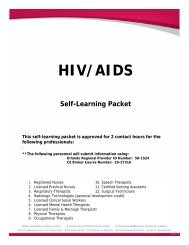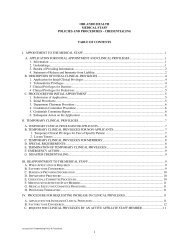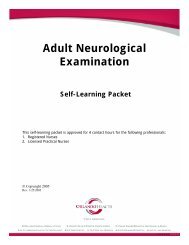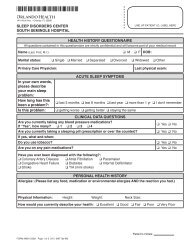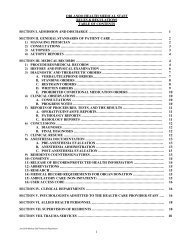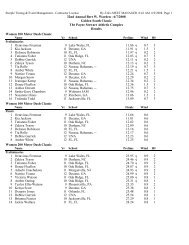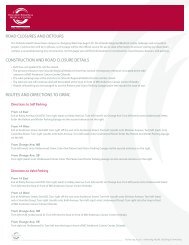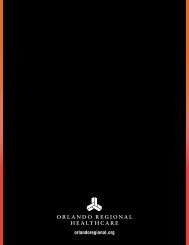Advanced Hemodynamics - Orlando Health
Advanced Hemodynamics - Orlando Health
Advanced Hemodynamics - Orlando Health
Create successful ePaper yourself
Turn your PDF publications into a flip-book with our unique Google optimized e-Paper software.
Purpose<br />
<strong>Advanced</strong> Hemodynamic Monitoring<br />
This packet was designed for nursing personnel who care for patients with pulmonary artery<br />
catheters in the critical care units. Prerequisites for this packet are a working knowledge of basic<br />
cardiovascular anatomy and physiology, cardiovascular pharmacology, and basic ECG<br />
interpretation skills. This packet meets the Florida State requirement for continuing education<br />
credit for nursing licensure. <strong>Orlando</strong> <strong>Health</strong> is an Approved Provider of continuing nursing<br />
education by Florida Board of Nursing (Provider No. FBN 2459) and the North Carolina Nurses<br />
Association, an accredited approver by the American Nurses Credentialing Center’s Commission on<br />
Accreditation (AP 085).<br />
Objectives<br />
After completing this packet, the learner should be able to:<br />
1. Define cardiac output, stroke volume, preload, afterload and contractility<br />
2. Describe the technical set-up of pulmonary artery catheter monitoring equipment<br />
3. Discuss the clinical significance of pulmonary artery catheter monitoring<br />
4. Describe accurate pulmonary artery pressure measurement<br />
5. Discuss clinical indications and contraindications for hemodynamic monitoring using<br />
pulmonary artery catheters<br />
6. Identify normal values and waveforms for the hemodynamic values that are obtained from<br />
pulmonary artery catheters<br />
7. Interpret all values obtained from the pulmonary artery catheter and relate them to various<br />
normal and abnormal physiologic states<br />
8. Calculate and evaluate the accuracy of invasive hemodynamic monitoring data using the<br />
square wave test and waveform analysis.<br />
9. Identify potential troubleshooting techniques when an inaccurate system is identified.<br />
10. Identify potential complications of pulmonary artery catheter monitoring.<br />
11. Identify conditions which may alter hemodynamic readings obtained from the pulmonary<br />
artery catheter<br />
12. Describe and troubleshoot abnormal assessment findings encountered with pulmonary artery<br />
catheter monitoring<br />
13. Describe correct removal of a pulmonary artery catheter<br />
Instructions<br />
In order to receive contact hours, you must:<br />
<br />
<br />
<br />
complete the posttest at the end of this packet<br />
submit the posttest to Education & Development with your payment, or to the Online Testing<br />
Center located on SWIFT via E-learning<br />
achieve an 84% on the posttest<br />
Be sure to complete all the information at the top of the answer sheet. You will be notified if you<br />
do not pass, and you will be asked to retake the posttest.<br />
Copyright 2010 <strong>Orlando</strong> <strong>Health</strong>, Education & Development 2



